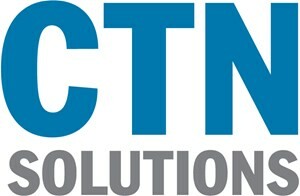These days most consumers lean heavily on their payment cards. Whether they use credit cards, debit cards, or gift cards, consumers today are much more apt to use their card then they are to use cash. Why is this? Convenience mostly, but also there is a belief that using a payment card is more secure than walking around with a wad of cash in your pocket. Today, we will get to the bottom of the matter.
Are Cards Actually Safer Than Cash?
Credit card companies have long claimed that the credit card is safer than cash, but are they? A few years back, they were unquestionably safer, but with card-issuing banks changing their terms of service to alter non-liability clauses, and with the uptick in global wire fraud, it complicates the scenario somewhat. Sure, if you are on a street and have $5,000 on a credit card and $5,000 in cash in your pocket, the $5,000 on the card is undeniably more secure.
Speaking of changing the language, most credit cards protect borrowers when they have their identities stolen and fraudulent charges pop up on their statements, but not all do. Debit cards typically come with even less assurance because the money is yours directly, and doesn’t belong to a FDIC-covered bank. If you received your credit card from a credit union, you will want to make certain that your card is NCUSIF covered, because their money is not protected by FDIC.
What is Used to Protect Card Users?
All retailers that do business with payment cards have to comply with the Payment Card Index Digital Security Standard (PCI DSS). This mandate requires any organization that accepts card payments to actively protect cardholder data. Cardholder data is any information found on a user’s payment card, and according to the PCI DSS mandate, shouldn’t be stored by an organization unless used to improve the product or service that is being purchased.
Outside of this standard, there has been some technological improvements that are aimed at keeping cardholder data secure. The first is the “chip”. Over the past few years the EMV chip (which stands for Europay, MasterCard, and Visa) has become standard on most payment cards and is used to encrypt data transfer. It sends a unique code to signify individual transactions. The code then expires if there is no need to return the purchase.
Other technologies that are improving protection for card carriers include:
- Dynamic Card Verification Values – The CVV found is the three-digit number found on the back of most payment cards. It functions as another verification option. Today, some banking organizations are beginning to use a dynamic CVV, which changes the value of the CVV based on what time of day it is. This means that someone will have to be in possession of a card in order to use that card digitally.
- Mobile Wallet – Think Google Pay and Apple Pay. Using near field communications (NFC), mobile wallets allow for linked cards and accounts to make purchases in participating locations. While being much more convenient, it is also a more secure way to pay for goods and services, provided that you take care of your account.
- Biometrics – Using technology that records and analyzes biological characteristics for the purpose of authentication, this technology is often found on mobile banking apps and other mobile technologies, but could be of great use if financial organizations were to standardize a thumbprint or retina scanner. Technology like this is being used in South Africa as well as some European and Asian markets.
If you rely on your payment cards, you need to consider how to keep your card and account information private and secure. If you need help getting your business compliant with PCI DSS, or if you need to protect your customers as much as your business, call the IT professionals at CTN Solutions today at (610) 828- 5500.
